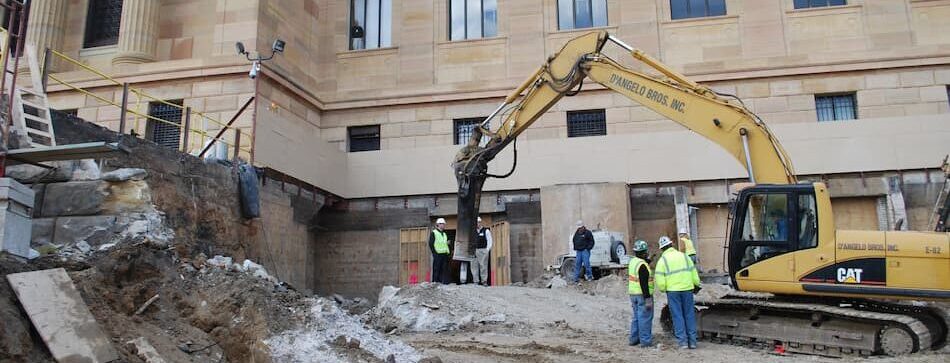Before starting a project, it’s important to know what you are trying to protect and how are you going to monitor it.
Every project is different and unique, just like different structures and soils have their own unique characteristics. Before you begin any project where vibration may be produced, it is important to understand what you need to protect, develop criteria specific for your project and identify how you will collect data to ensure you are staying within set limits.
Each project has unique considerations when developing vibration criteria. Are you:
- Using a rock hammer in close proximity to a 150-year-old Tiffany glass window
- Using a vibratory roller next to a restaurant with a million dollars of wine hanging on the wall
- Blasting 10ft away from a high-pressure gas transmission line
- Pile driving on beachfront property for new construction of million-dollar homes
To truly know how to protect a building, utility or pipeline, you need to collect its engineering data. Engineering data looks at the physical dimensions and dynamic characteristics of homes, buildings, gas lines, utility pipelines and soil to establish an acceptable level of vibration. This level is based on the structure’s material strength and its unique dynamic properties. Using that limit, we can predict how a structure, utility line or even soil will respond to vibration.
Next Step: Understanding the Vibration Source
Once the vibration criteria are established for the project, the next step is to understand the source of the vibration and its location relative to the features requiring protection. The vibration source, whether a piece of construction equipment or blasting, will produce kinetic energy that will have a certain strength or amplitude and will contain certain frequencies. It is important to know before the project starts whether these amplitudes and frequencies will meet the established criteria at a given distance from the feature requiring protection. If not, the means and methods of the project may need to be adjusted.
Final Step: Monitoring Vibration Levels
The final step in vibration criteria development is to monitor vibration to ensure you are staying within the set limits. But monitoring vibration is more than just collecting data, you first need to know where to monitor. Monitors can be placed in the ground, on the surface of the ground and on buildings. And based on those unique characteristics the placement of the monitoring equipment is equally important to make sure you are gathering the correct data to mitigate your vibration risk.
Turn to GeoSonics/Vibra-Tech for vibration criteria development for your project. Contact us today for more information or learn more about our other consulting services:

